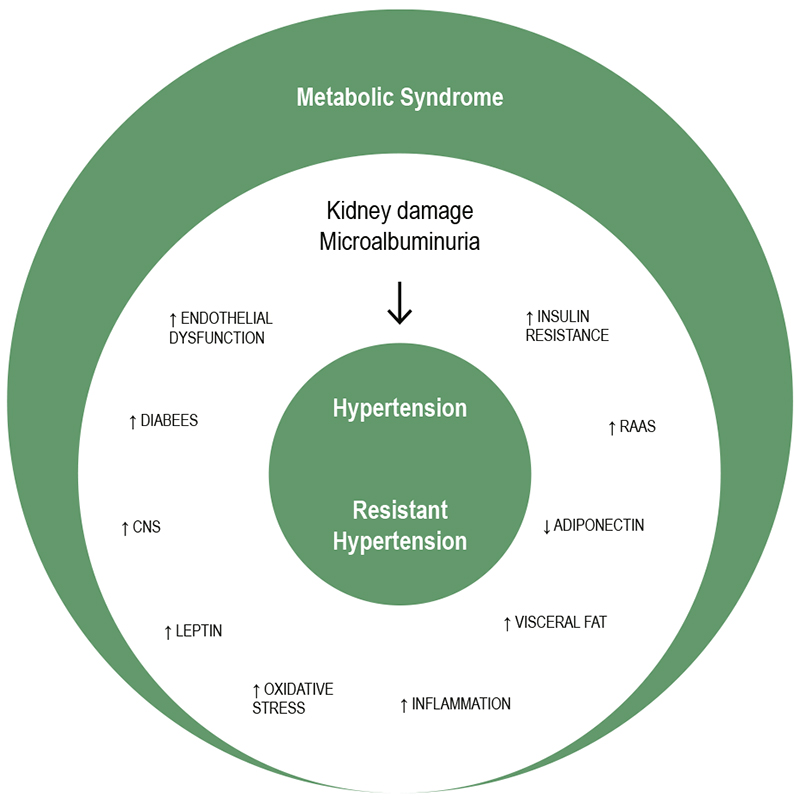Volume 110, Nº 6, June 2018
DOI: http://www.dx.doi.org/10.5935/abc.20180076
ORIGINAL ARTICLE
Metabolic Syndrome-Related Features in Controlled and Resistant Hypertensive Subjects
Arthur Santa Catharina
Rodrigo Modolo
Alessandra Mileni Versuti Ritter
Andréa Rodrigues Sabbatini
Heno Ferreira Lopes
Heitor Moreno Junior
Ana Paula de Faria

Figure 1 – Diagrammatic representation of the metabolic syndrome effects on hypertension and resistant hypertension (RHTN). Abbreviations: renin-angiotensin-aldosterone system (RAAS); central nervous system (CNS).
Abstract
Background: Metabolic syndrome (MetS) is widespread among hypertensive patients. Clinical features and potential biomarkers of MetS in the presence of hypertension and resistant hypertension (RHTN) represent a great area of interest for investigation.
Objective: The purpose of this study was to evaluate the prevalence of MetS and the clinical features associated with it in resistant and mild to moderate hypertensives.
Methods: This cross-sectional study included 236 patients, (i) 129 mild to moderate hypertensive patients and (ii) 107 patients with RHTN. We measured blood pressure (BP) and adipokines levels, and performed bioelectrical impedance analysis. Microalbuminuria (MA), cardiac hypertrophy and arterial stiffness were also assessed. The significance level of alpha = 0.05 was adopted.
Results: We found a MetS prevalence of 73% in resistant and 60% in mild-to-moderate hypertensive patients. In a multiple regression analysis, MA (odds ratio = 8.51; p = 0.01), leptin/adiponectin ratio (LAR) (odds ratio = 4.13; p = 0.01) and RHTN (odds ratio = 3.75; p = 0.03) were independently associated with the presence of MetS apart from potential confounders.
Conclusions: Our findings suggest that both resistant and controlled hypertensive subjects have a high prevalence of MetS. In addition, MetS related metabolic derangements may cause early renal and hormonal changes. Finally, LAR may be useful as a reliable biomarker for identifying those hypertensive subjects who are at risk for developing MetS. (Arq Bras Cardiol. 2018; 110(6):514-521)
Keywords: Metabolic Syndrome / diagnosis; Cardiovascular Diseases / mortality; Cholesterol; Waist Circumference; Triglycerides















